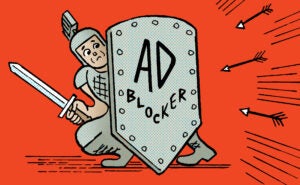 When IBM acquired email and marketing automation platform Silverpop, industry watchers wondered if this meant IBM, too, was building its own marketing cloud. What integration plans did IBM have for Silverpop? What technological gap, specifically, did the acquired company fill?
When IBM acquired email and marketing automation platform Silverpop, industry watchers wondered if this meant IBM, too, was building its own marketing cloud. What integration plans did IBM have for Silverpop? What technological gap, specifically, did the acquired company fill?
Bill Nussey, Silverpop’s president and CEO, who has since joined IBM, spoke with AdExchanger at the Smarter Commerce Summit in Tampa, Fla.
AdExchanger: Rumor has it multiple enterprise suitors looked at Silverpop. Why IBM?
BILL NUSSEY: We’ve actually been integrated with IBM’s products for years. We had several joint customers with Coremetrics, the digital analytics tools, and Unica. So in terms of solutions today, we’ve been working with them long before we decided to get a little closer so to speak. I expect we’ll continue to invest in those [relationships] and kick off a process in the next few months to really build a long-term roadmap and see where we can take this. The market has been in a frenzy in the last year and we had the opportunity to speak with a lot of companies. If you look at the investment IBM has made in R&D and their Smarter Cities initiative, they truly believe technology can be transformative and I love that.
Silverpop has what it calls a flexible behavioral marketing database. Are you a data-management platform?
We never set out to become a data-management platform and ultimately I don’t think that’s our goal right now. But that being said, for a lot of midsize companies, we are effectively a data-management platform and I think with IBM we’ll be able to explore what that means with more enterprise marketing organizations.
What is Silverpop’s technology differentiator?
Most of the marketing technology that’s evolved over the last couple of decades was IT-centric. The way customer data has been stored was in the way IT was comfortable with – in rows and columns that assume everyone in [the] database has similar attributes. Universal Behaviors [a Silverpop feature] gives marketers a place to store any kind of data without the requirement it fit the traditional IT mold for data storage. The challenge for marketers is the data that’s relevant to them doesn’t work conveniently with the data models IT has been using for decades. Another element [that differentiates us] is single identity.
What’s single identity?
In most systems that store marketing data, there has to be a single key to unlock the door to customers’ data. That is typically the email address. We created a unique approach called single identity, which allows us to store marketing data on customers regardless of whether or not you have an email address. The most relevant area for that are mobile apps. Single identity allows us to use the mobile app’s ID to understand what customers are doing regardless of where the customer is or what they’re doing. This goes for Web cookies and loyalty IDs or an iBeacon when you walk into a store – that’s the kind of data marketers are talking about.
What’s the difference between marketing automation and campaign management? Which one are you?
Marketing automation was born in B2B, and what [it] does is take the whole marketing idea outside of segments and targets and audiences and builds it around the customer. So marketing automation allows you to create experiences for the customer that is unique for every individual. This is very different than audiences and segments. Silverpop took the concept of B2B marketing automation and took it outside to B2C… that is technically challenging [to do at scale] and something we believe we’ve done uniquely.
How are you integrating with IBM?
IBM was talking today about [mobile messaging platform] Xtify and Silverpop together. Mobile will probably eclipse any other Web interaction soon. Xtify provides a critical piece for our customers. Long before we had started talking to IBM about the acquisitions, push notifications were something we reviewed and Xtify surfaced as the leader in the space. We already have integrations with them but will continue to get deeper and stronger.
Is Silverpop enterprise-grade or more of a midmarket tool?
It’s funny because Silverpop is sometimes viewed as [only dealing] with large companies and sometimes I hear we only deal with midsize companies. The truth is we serve both and you do that by making the product incredibly easy to use. Our challenge is to make it usable – we put 30% of R&D in the last year into usability of the product. All of a sudden you can take that enterprise level capability and a midsize company can afford it. Alot of our traditional competitors require tons of setup and configuration and are great products for companies with larger enterprise cycles.
So did IBM buy Silverpop because of Unica’s complexity?
They’re really complementary. We work with Unica on a number of accounts and Unica has the ability to deal with quantities of data and external data and it runs inside the customers’ firewall on their premise, so all those qualities mean Unica can be the database of record for any company of any size and any scale; marketers need that fundamental foundation.
I think Silverpop gives our existing shared Unica customers the ability to do that at once. We bring a complementary ‘making complex things easier.’ [As a use case] say your competitor launches a promotion for a product and you see sales shifting and you need to react within minutes not days and weeks. A tool like Silverpop means a marketer can sit down within minutes and craft a campaign that’s relevant in minutes and doesn’t need IT’s involvement. Our customers can pull data or work with data that’s been managed by Unica.
Do you predict more M&A will come at the intersection of ad tech and digital marketing tech?
IBM was one of the first companies that called that the CMO was becoming the largest purchaser of technology in the enterprise and it’s hard to think we’re anywhere near the maturation stage. Until we are, I think it will grow at a rapid pace and we’ll see a steady stream of M&A for not only marketing automation, but ad tech and analytics and new channels emerging. We’re just scratching the surface of what’s possible with mobile. Marketing tech is so different than IT. The goal of IT is to create something, put it in place so that it continues to run like how it did when you put it in place. If you say that to a marketer, they’re going to kick you out of the room. And that phenomenon is not going to change, and all this money is moving to the CMO, and you’re looking at a tectonic shift in the way people think about how IT is consumed.












